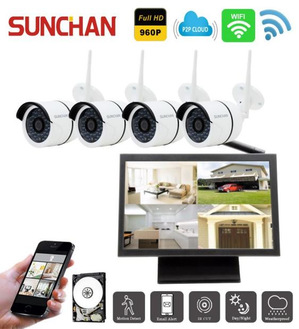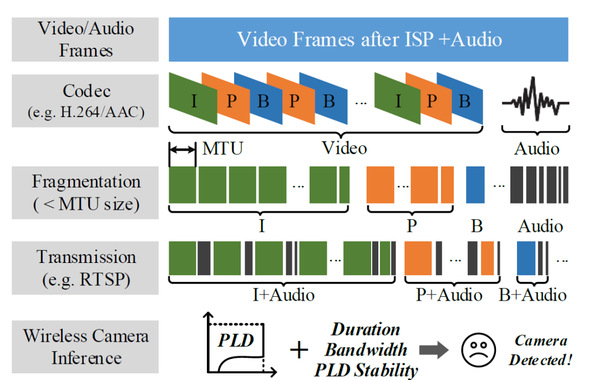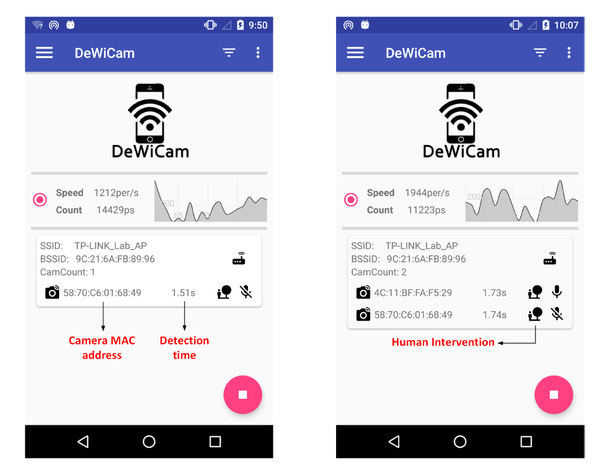Hidden spy cameras have “nowhere to hide”
Have you ever tried to check whether there is a hidden camera in a hotel room? Have you ever worried about being secretly filmed while trying on clothes in a fitting room? Unsurprisingly, how to detect the illegal “electronic eyes” in a hidden corner quickly and accurately has become an urgent demand for privacy protection.

With nearly five years of research and testing, the research team led by Prof. XU Wenyuan and Assoc. Prof. JI Xiaoyu at the Ubiquitous System Security Lab (USS Lab) at the Zhejiang University College of Electrical Engineering, has successfully developed DeWiCam, a lightweight application that can detect the unauthorized hidden cameras with an accuracy of 99% within 2.7 seconds.
DeWiCam runs on the Android platform and has been validated by extensive experiments on 20 popular wireless cameras with 11,000 evaluation traces spanning 30 days in 2 locations.
When a user enters an untrusted room and runs DeWiCam on his or her smartphone, it will automatically analyze wireless traffic to recognize the distinct traffic patterns of wireless cameras, if any.

Working principle for DeWiCam
“In this process, DeWiCam doesn’t have to access Wi-Fi cameras and users don’t have to provide any information. Moreover, it is effective despite interference from other signals. In this way, it provides a user-friendly yet effective way to detect hidden cameras,” explains CHEN Yushi, one of the key team members in the DeWiCam project.
How to turn a laboratory product into a “household” application? This poses another formidable challenge for the research team in the very beginning.
The network traffic data that DeWiCam can obtain is limited by its network access permission. DeWiCam may extract a mixed flow from any non-camera devices, which adds challenges to data analysis. Moreover, by analyzing wireless traffic, it can detect the existence of any cameras, but cannot identify their locations.

Operation interface for DeWiCam
To this end, the research team proposes a method for the identification of camera traffic based on the packet length distribution. In this way, DeWiCam can capture the unique idiosyncrasy of wireless camera traffic. The presence of wireless cameras can thus be detected.
How to determine the location of a wireless camera? To address this problem, the research team develops a human-assisted identification model by monitoring the traffic changes triggered by the human intervention. Specifically, if a user deliberately moves in front of a camera, the camera will capture extra motions that increases the camera bitrate. As such, DeWiCam can eventually determine whether the camera is in the same room as the user.
DeWiCam has been pre-installed in the ColorOs 12.1 system in the latest edition of OPPO Find X5. Users can detect a hidden camera with an app in the phone, and the accuracy rate of detection reaches stunningly 96.6%.
“We expect DeWiCam to work on other types of phones, and our mission is to develop technologies to protect users’ privacy with the proliferation of modern smart devices,” says Prof. XU Wenyuan, director of the USS Lab.
Photo credit: the research team led by Prof. XU Wenyuan and Assoc. Prof. JI Xiaoyu